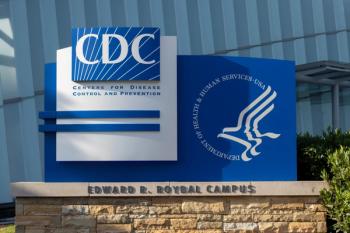
Ozanimod Meets Primary Endpoint in Multiple Sclerosis Treatment
Phase 2 trial shows reduction in the cumulative total number of gadolinium-enhancing lesions in MS patients.
An investigational multiple sclerosis (MS) drug met its primary endpoint during a phase 2 trial in reducing the number of lesions on the brain, according to data presented at Americas Committee for Treatment and Research in Multiple Sclerosis.
The study, published in Lancet Neurology, detailed the results of the RADIANCE trial for Celgene’s ozanimod. An MRI week showed a reduction in the cumulative total number of gadolinium-enhancing (GdE) lesions from week 12 to 24.
A 48-week blinded extension portion of the study, found patients originally randomized to ozanimod continued on their assigned dose (0.5 mg, n = 85; 1 mg, n = 81), compared with patients in the placebo arm who were randomized to either dose of ozanimod (0.5 mg, n = 41; 1 mg, n = 42).
The results of the study showed that those who were administered ozanimod continuously through week 72 had a mean number of GdE lesions of 0.4 for patients on the 0.5 mg dose and 0.2 for on the 1 mg dose. These results were similar to those at week 24.
Patients in the placebo group switched to either dose of ozanimod after week 24 had a mean number of GdE lesions that decreased by 90% to 95% compared to week 24.
Approximately 73% of patients who received a 0.5 mg dose of ozanimod continuously through week 72 were free of GdE lesions by week 72 and 88% for the 1 mg dose. This was in comparison to the 84% and 89% at week 24.
Patients in the placebo group who switched to 0.5 mg dose of ozanimod at week 72 were 85% free of GdE lesions and 79% for the 1 mg dosage, compared with 59% and 69%, respectively, at week 24.
Adverse events (AEs) were similar across the ozanimod dose groups. Headaches, back pain, and minor infections such as nasopharyngitis, upper respiratory tract infection, and urinary tract infection were the most common non-laboratory treatment-emergent AEs.
"These data suggest that ozanimod has the potential to offer a new oral therapeutic option for patients with relapsing multiple sclerosis who seek therapies with different benefit-risk profiles to help manage their chronic disease," said President of Celgene Scott Smith. "The 72-week safety and efficacy results further demonstrate the potential promise of ozanimod. We look forward to the continued study of this compound in the 2 ongoing pivotal phase 3 clinical trials - SUNBEAM and the 2-year portion of RADIANCE."
Newsletter
Stay informed on drug updates, treatment guidelines, and pharmacy practice trends—subscribe to Pharmacy Times for weekly clinical insights.






















































































































































































































